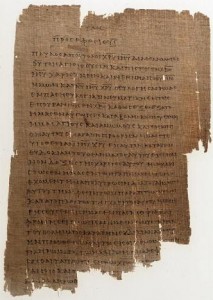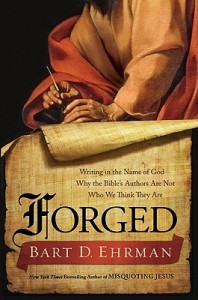By Cris Putnam
The dating and authorship of Acts is connected to the date for the Gospel of Luke since Acts is the second of a two volume work by the same author. It was not unusual in Greek, Latin, and Jewish works for an author to divide into volumes as in the case of Luke/Acts.[1] This is evidenced clearly in that both are written for the benefit of a person named Theophilus and Acts begins by referring, “In the first book…” (Acts 1:1). Many critical scholars date Acts in the 80s mainly due to an anti-supernatural bias concerning Jesus prophecy about the surrounding of Jerusalem in Luke 21. They reason that If Luke is post AD 70 then Acts is even later.[2] However, it is highly significant that there is no mention of the destruction of Jerusalem as fulfilled prophecy, Nero’s persecution or the execution of Paul. These events are monumental milestones in Christian history yet Acts ends abruptly with Paul still in prison, no discussion of Nero and no mention of the fall of Jerusalem. The most logical conclusion is that the events had not yet occurred.[3] The abrupt ending with Paul still in jail seems decisive. Thus, conservative scholars date Acts in the early sixties. Authorship is not as contentious.
There are compelling reasons to accept Luke as the author. It reads like the author of Acts was present during some of the events he narrates. For instance, during the trip from Troas to Philippi on Paul’s first missionary journey the author uses “we” as if he were there (16:10–17).[4] Evidence in Paul’s letters reveals Luke accompanied Paul (Col 4:14). Furthermore, the uniform testimony of the early church that Luke was the author of the third gospel and of Acts is undisputed.[5] Although Luke was a Gentile he had familiarity with Greek Old Testament. He had excellent Greek, research and writing skills. He was familiar with the genre of historical writing in the Hellenistic style.[6] In fact the word, “Acts,” inferred a recognized genre for books that described the great deeds of people or cities.[7] As far as historical detail the book has demonstrated remarkable accuracy. Luke uses the specific correct terms for Roman officials (Acts 18:12; 23:26) and the use of the correct nautical terminology in the account of Paul’s shipwreck has been verified.[8]
A late nineteenth century skeptical archeologist, Sir William Ramsay, started out to prove that Acts was a second century work of fiction and was persuaded by his findings to the contrary. He concluded, “Luke is a historian of the first rank; not merely are his statements of fact trustworthy…this author should be placed along with the very greatest of historians.”[9] This has been corroborated by the work of modern scholars like Colin Hemer.[10] Because of the accuracy in general details which can be checked is established, we have justification to trust the rest.[11] One argument for Luke’s accuracy in capturing the words of the apostles is that Peter’s sermon summaries in Acts use idiomatic Greek expressions that also appear in 1 Peter.[12] Finally, the issues of date and author are important because they assure us that our faith is based on reality. Biblical faith is not a leap into the dark or wishful thinking. Rather, it is more akin to earned trust. Like Ramsay’s conclusions because Luke has proven trustworthy in what we can see and verify we have cause to trust him in what we cannot verify.
Here is a nice video from the YouTuber Shazoolo:
[1]Clinton E. Arnold, Zondervan Illustrated Bible Backgrounds Commentary Volume 2: John, Acts. (Grand Rapids, MI: Zondervan, 2002), 223.
[2]D. A. Carson and Douglas J. Moo, An Introduction to the New Testament, Second Edition (Grand Rapids, MI: Zondervan, 2005), 297.
[3]Thomas D. Lea and David Alan Black, The New Testament : Its Background and Message, 2nd ed. (Nashville, Tenn.: Broadman & Holman Publishers, 2003), 283.
[4]Carson and Moo, An Introduction, 290.
[5]D. A. Carson and Douglas J. Moo, An Introduction to the New Testament, Second Edition (Grand Rapids, MI: Zondervan, 2005), 291.
[6]Clinton E. Arnold, Zondervan Illustrated Bible Backgrounds Commentary Volume 2: John, Acts. (Grand Rapids, MI: Zondervan, 2002), 221.
[7]Carson and Moo, An Introduction, 285.
[8]Lea and Black, The New Testament, 286.
[9]Josh McDowell, Evidence for Christianity (Nashville, TN: Thomas Nelson Publishers, 2006), 93.
[10] Lea and Black, The New Testament, 286.
[11]I. Howard Marshall, Luke: Historian and Theologian (Milton Keynes, UK: Paternoster, 1970), 69.
[12] Lea and Black, The New Testament, 284.






